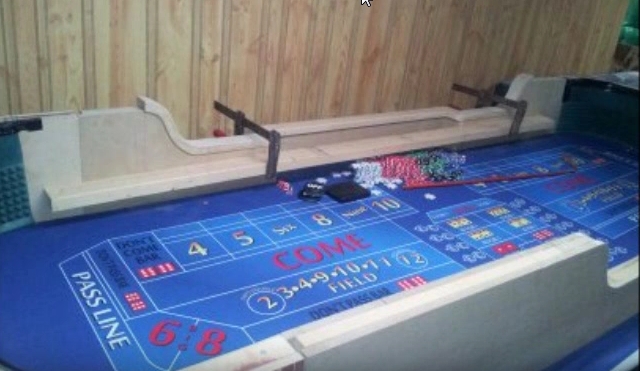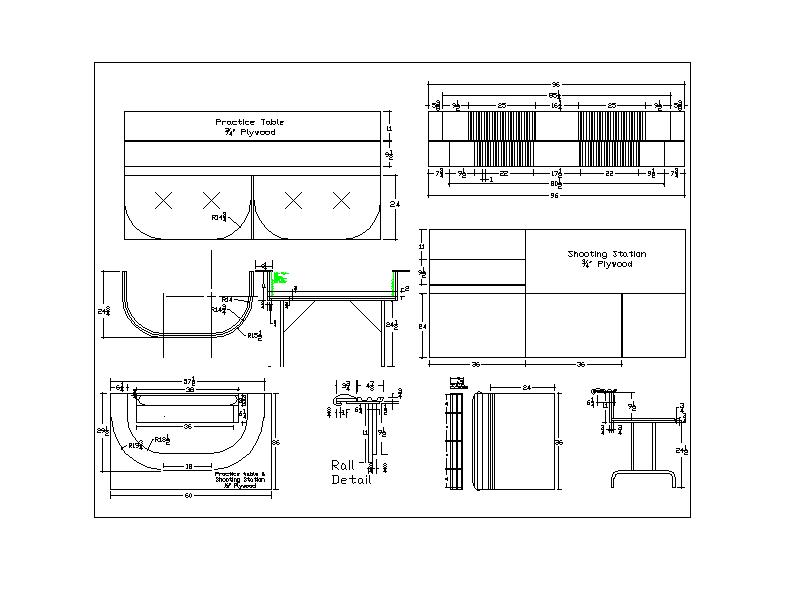What Are The Dimensions Of A Craps Table
Hover

What Are The Dimensions Of A Craps Table
Hover
Due to the overwhelming demand for craps tables we are. Manufacturing 12 brand new Las Vegas tables.Lead time for these tables will be 6-8 weeks. 50% deposit is required. Balance due prior to shipping. NEW TABLES INCLUDE: Custom layout of your choice. Wooden Dice Bowl. Dice Sleeve (5 Dice) On/Off Puck.
Hover
$1,895.00
This craps table is an excellent value !!
- Crap tables: 14 to 18 feet long, or 8 feet for a tub. A two-sided 12-footer is often seen. For learning, a six-foot layout on a particle board base is fine as a table top practice table. Blackjack, Pai Gow poker/tiles, or Poker side game: 6 feet across. Low-Boy Baccarat or PGP: 8 feet across.
- Craps tables in land-based casinos could theoretically serve a total of 22 players as there are 22 sections to hold their chips. Normally, there are between 14 and 18 players at the craps table. The Craps Table Layout. Craps tables have always looked terrifying to players with less experience and some even avoid it.
Description
12 foot, 137″ Craps Table
This craps table is an excellent value !!
What Are The Dimensions Of A Blackjack Table


- Las Vegas style craps layout (blue or green felt)
- Replaceable felt design
- Green or blue pyramid dice rubber on both ends
- Double row oak chip racks w/ 12 positions
- 2″ thick padded arm rests
- Sturdy table legs
- Table is 137″ x 48″ x 35″h
- Inside dimensions: 123″ x 38″ (approx.)
- Total weight: 350 lbs.
- 15 to 20 minutes to assemble
- Only tool required is a screw driver
- Table shipped by truck freight within the continuous US only
- Can be shipped to Canada or Mexico for an additional cost
 Be the first to review “12 foot 137″ Craps Table – ideal for the home game room”
Be the first to review “12 foot 137″ Craps Table – ideal for the home game room” You must be logged in to post a review.

Related products
The most obvious piece of information a savvy craps player needs to know is where everything sits on the craps table and which bets can be placed where. Craps tables are fantastically well-labeled, with each betting zone colorfully and prominently divided and labeled. A few table layouts add designated spaces for some of the more unique proposition bets, but all craps tables contain the same basic design.
Attributed to John H. Winn, the dice maker who took craps from the steamboats on the Mississippi into popular casino play in the 1800′s, this table layout was originally called the Philadelphia layout. Winn is responsible for introducing the Don’t Pass and Don’t Come bets, allowing a player to bet against the shooter as well as for the shooter on a particular dice roll.
Physical Layout of the Table
Players stand facing the craps table along the sides and front of the rounded-corner, rectangular table. The front, or bottom, of the table is the edge from where you can read all the words and numbers properly. Most of the craps table crew including the dealers and boxman sit at the top of the table and read upside down. A standard size casino craps table will comfortably hold up to twenty standing players around it.
The felt and base of the table sits down several inches from the rail along the edge. Below this rail are places for drinks and ashtrays, to keep any food, beverages, and cigarette ashes off the playing surface. The table is large enough that bets are placed at their marked spots on the table for all the active players. Dice are rolled onto the table as well, hence the recess allows for keeping the dice on the table most often.
When you look at the table layout, you first notice that there is a central zone and two, symmetrical left and right halves to the table. This helps maximize the number of players placing bets in the most commonly used zones. You also notice that every area is labeled with its area and bet name as well as payout odds for some particular bets. Not everyone of the almost forty possible bets is “visibly listed” on the table, but the vast majority and the most commonly used are.
From Outside In: Bottom Left and Right Zones
The ring on the outermost loop of the table layout is the pass line betting area. Working on mirror-image 90º angles, the pass line curves down both the left and right sides, along to the lower left and right corners. Pass line bets are made on the come out roll only. One of the most frequently used bets, the pass line asserts that the shooter will roll a natural (7 or 11) or a point (four, five, six, eight, nine or ten) before rolling craps (2,3 or 12).
Just inside the pass line loop is the Don’t Pass line loop, with the Big 6 and Big 8 bets at the lower junction corners of the don’t pass line area. Don’t pass bets are those betting wrong, against the shooter on the come out roll, asserting that the shooter will roll craps before the natural or point. Big 6 and Big 8 bets are proposition bets that cumulative state that the shooter will hit a six or eight before he sevens out.
Pass line and don’t pass line bets have the lowest house edge of the visible bets and are some of the best bets for players to make. Big 6 and 8 have very high house edges and are such a poor bet for players that Atlantic City casinos actually removed this bet from the craps table. Players are wiser to use Place bets on six and eight.
Middle Left and Right Zones
The next section adjoining a smaller surface area within the don’t pass loop is the field box. Playing the field means placing single roll bets on one or more of the field numbers. A field bet indicates that the shooter will show, on their immediate next roll, either a two, three, four, nine, ten, eleven or twelve. If one of those numbers appears, the field bet wins. Field bets on two and twelve pay double the bet; the rest of the field box numbers pay even money.
Bottom Central Section
The center of the table holds the spaces for the proposition bets. This is the non-mirrored zone on the table and houses a box divided into several different proposition bets. These are all one roll bets, asserting the outcome of the next immediate dice roll.
At the top of the prop bets box is the “any 7″ bet, which will pay a win on the next roll being a seven. At the bottom of the prop bets box is the “any craps” bet, calling for the next roll to be 2, 3 or 12.
Just below the any seven section is the box for hardways bets, which actually can hold over several rolls rather than just one. Hardways bets call for a matched pairs dice combination on each even number four through ten. Hardways bets are hard four (two 2′s), hard six (two 3′s), hard eight (two 4′s) and hard ten (two 5′s). To win a hardways bet, these pairs must appear before seven or an an easyway combination of the same number. A few additional unique hardways bets can also be placed in this area such as a buffalo bet or hoping hardway (two 1′s), but these are not listed on the table.
Below this section is the horn bet box. Horn bets are multi-part bets, which place money on the next roll being one of the least rolled dice combinations, a 2, 3, 11 or 12. Individual craps bets can be placed on any single one of these numbers as well. Horn high bets split two parts of the bet toward the 12 being rolled, and leave one part each for the 2, 3 and 11.
In between the proposition bets box and the outer loops, some tables include specifically labeled areas for C-E and E.T. bets, which are proposition multi-part bets on craps or eleven (C-E) and eleven or twelve (E.T.) being the next rolls showing numbers. Even if these sections are not labeled on the table, players may place these bets also.
Upper Left and Right Table
At the back of the table, or the upper left and right corners are another series of boxes. Just above the field box is the come box. Immediately above the come box is a row of boxes, from the outside in that are the don’t come box and the ten, nine, eight, six, five and four place bet boxes.
Come bets parallel pass bets but may be made anytime after the point is established on or after the come out roll. Come bets are right bettor, pro-shooter bets that state the shooter will hit the point or seven before craps. Don’t come bets parallel don’t pass bets. Don’t come bets are the wrong bettor side stating that the shooter will hit craps before the point or seven. Come and don’t come bets, like pass and don’t pass bets have the lowest house edges, closest to true odds.
Place bets are made on one or more of the individual numbers at the top of the table, stating that the shooter will roll one of these before sevening out. Place bets have the second best house edge for players, behind pass/come, don’t pass/don’t come bets.
There are numerous other non-visible bets, including one of the best for players: free odds bets. Free odds bets are made after and in addition to a standing pass/come, don’t pass/don’t come bet, stating that the original bet will win. Free odds bets have almost zero house edge. Other non-visible bets include aces, midnight and other single roll proposition bets.
Once a player sees the craps table layout, he knows where to bet. The visually rich table layout keeps the bets clearly before shooter and players around the exciting craps game.